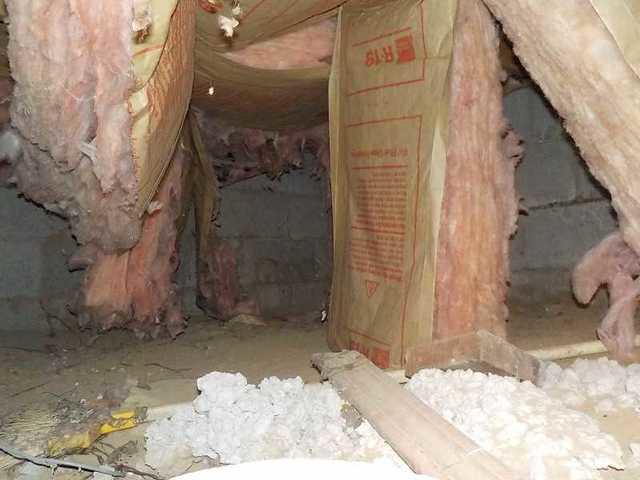
Falling, Moldy Insulation
Fiberglass insulation, while often used throughout homes, isn't a great choice for wet areas like basements. It absorbs moisture and allows mold to grow (mold feeds on the paper backing) and can even fall down completely after being waterlogged.

Water Staining on Floor
Hydrostatic pressure, which occurs when soil has gone past its saturation point, causes water to come up through the floor with seemingly no source.

Signs of Water Under Basement Finishings
This basement was finished, so it took a while to realize there was a water issue. When they cut away the carpet, our customers could see staining indicating water damage.
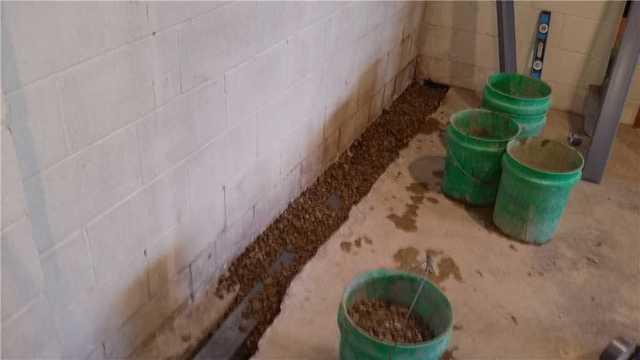
Digging a Trench for WaterGuard
We remove the perimeter of the basement floor in order to install WaterGuard. This allows for thorough water collection without the risk of clogging.
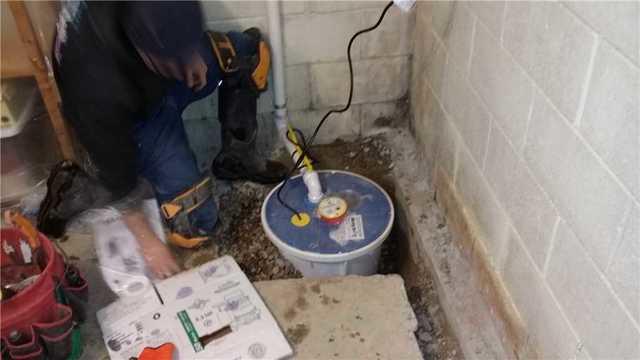
Installing the SuperSump
No matter what perimeter system you install in a wet basement, it won't matter if you don't include a sump pump to actually discharge the water.
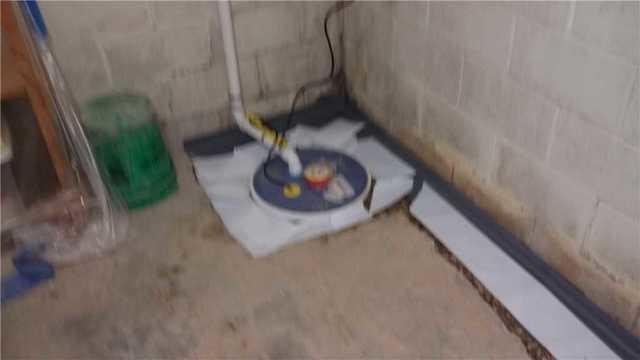
Connecting to the Sump Pump
The WaterGuard system is tied right into the sump pump to ensure quick and efficient water evacuation.
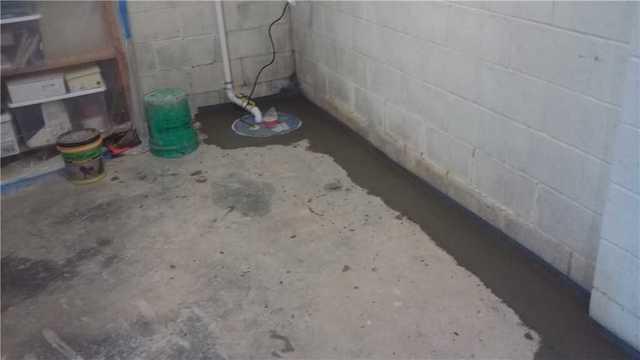
Pouring New Concrete to Finish WaterGuard Installation
Once the system is in place and tied into the sump pump, we pour new concrete to protect the system and restore the floor.









